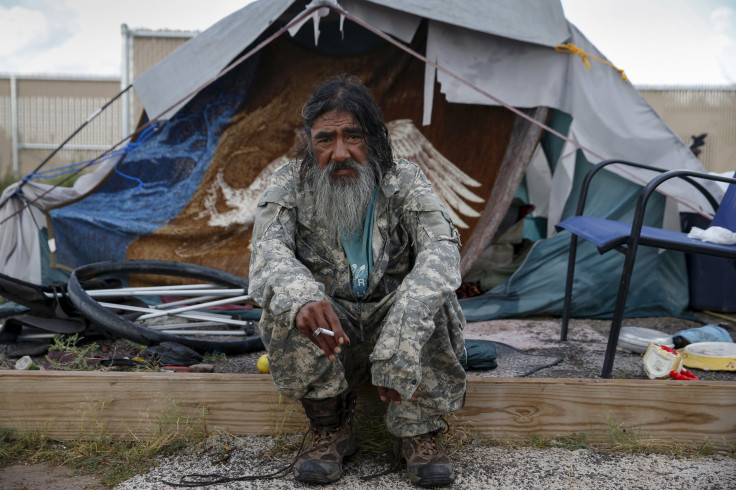Veteran Homelessness: Austin Mayor Says Homes Found For All Veterans In City

For the more than 370 homeless veterans of Austin, Texas, the new year is expected to bring a new roof over their heads. Austin Mayor Steve Adler said Wednesday that housing has been found for all the homeless veterans in the city, although some vets will have to wait until the calendar shifts to well into 2016 to move into their new accommodations, Time Warner Cable News reported.
Adler promised in August to house all Austin’s homeless veterans by Veterans Day in November, a deadline he initially missed, KLFY-TV in Lafayette, Louisiana, reported. He said the city has now found the units, but that all of them are not available, some not until March. For the time being, those veterans will be able to live in a temporary shelter.
A new trust has been set up to help cover the gap between what veterans get in federal benefits and the rent for the market-value homes they are expected to live in. The city has gotten about $400,000 in donations to help pay for the market-price rents.
Austin’s occupancy rates are extremely high, meaning finding the rooms for the veterans to live in has been one of the most difficult problems in eventually housing them all. “The thing to keep in mind is that homelessness in this community is not static; it doesn't end tomorrow,” Austin Chief Service Officer Sly Majid said to KVUE-TV in Austin.
While perfect statistics are hard to come by, the U.S. Department of Housing and Urban Development estimated that nationally, 47,725 veterans were considered homeless as of November. Some 11 percent of all homeless adults are veterans, the department said in a report.
Adler: Austin has enough housing units to end veteran homelessness ... https://t.co/9N0dfjZd55 pic.twitter.com/PoLxLVjlt9
— Austin Statesman (@statesman) December 31, 2015
The National Coalition for Homeless Veterans attributes veteran homelessness to many factors, including affordable housing shortages, post-traumatic stress disorder and substance abuse. They also said on their website veterans can be at a disadvantage when trying to seek employment because military occupational training doesn’t always transfer easily into a civilian work environment.
© Copyright IBTimes 2024. All rights reserved.




















